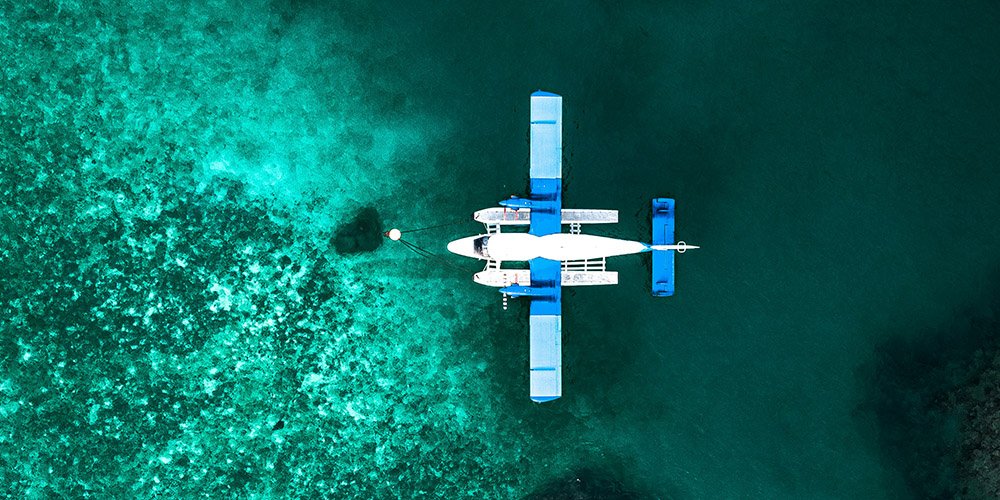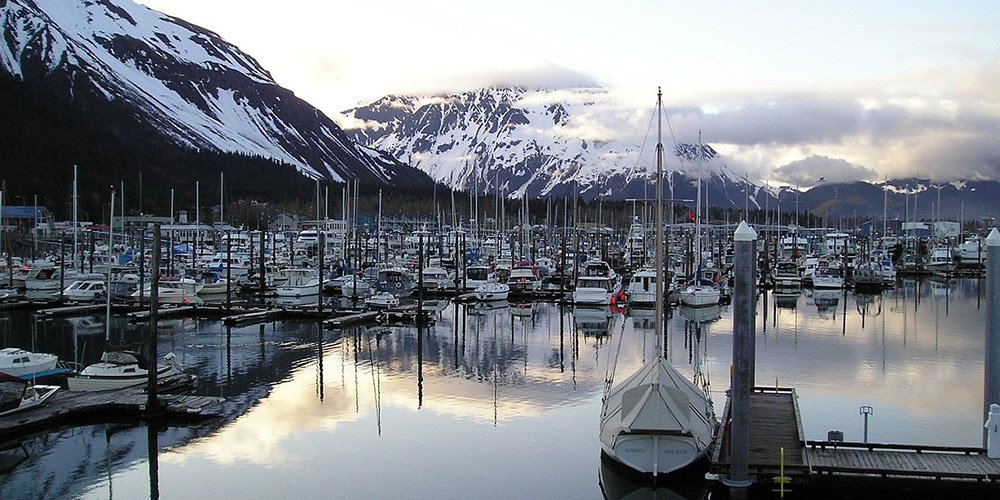Flying Over Water? Here’s Why Every Aircraft Needs a Life Raft
If your flight path takes you over open water, emergency gear is more than a checklist item. It is a lifeline. Many pilots overlook the importance of life raft aircraft equipment until planning their first extended overwater flight.
Once you are more than 30 minutes or 100 nautical miles from shore, FAA regulations become much more strict. This guide explains when life rafts are required and how to be prepared for an emergency landing.
Understanding FAA Life Raft Requirements
Pilots who fly over water must know exactly where and under what conditions they need life rafts as mandatory equipment.
When life rafts are legally required
The Federal Aviation Administration sets two different thresholds for water survival equipment. Flights that go beyond 50 nautical miles from shore need each person to have a life preserver or approved flotation device. The rules get tougher by a lot for extended overwater operations. These are flights that last more than 30 minutes or go beyond 100 nautical miles from the nearest shore (whatever comes first). Life rafts become mandatory equipment for certain aircraft categories under these conditions.

FAR 91.509 and its implications
FAR 91.509 covers large aircraft (over 12,500 pounds MGTOW) and turbine-powered multiengine aircraft. This rule says these aircraft must carry:
- Life rafts with approved survival locator lights that fit all people on board
- At least one pyrotechnic signaling device per raft
- A water-resistant emergency radio signaling device
- A lifeline stored based on specific rules
On top of that, it must be easy to find and reach all required equipment if there’s a water landing without much time to prepare. Each raft must have a survival kit that matches the route you’re flying.
If you’re looking for the right life raft aircraft solution that meets FAA standards and real-world survival needs, explore our full guide to see what equipment is essential for overwater safety.
Differences between Part 91, 121, 125, and 135
Life raft rules change based on what type of flying you do. Part 91 operations give you more options. You need life rafts for extended overwater operations, but they don’t have to be TSO-approved (Technical Standard Order).
Part 135 operations (charter flights and air taxis) face stricter rules. They must use TSO-approved life rafts for extended overwater flights. They also need to follow the detailed equipment list in 135.167(b). This list has things like signaling mirrors, whistles, repair kits, and emergency rations.
Part 121 carriers (scheduled airlines) follow the toughest standards with mandatory TSO-approved equipment and extra requirements. Transport category aircraft under Part 25 need enough extra space to fit everyone even if they lose their biggest raft. This is a big deal as it means that all passengers can still survive.
These rules might seem complex, but they will give a better chance of survival if you ever need to land on water.
Essential Emergency Gear for Overwater Flights

Image Source: Collins Aerospace
Your aircraft’s emergency water landing equipment could save lives in a crisis.
Life vests vs. life rafts: what’s the difference?
Life vests give immediate personal flotation, while life rafts protect occupants from harsh elements. Aviation life vests are compact and inflatable, unlike the bulky foam life jackets used in marine settings. Most aviation vests use CO2 cartridges for inflation, with manual tubes serving as backup.
Life rafts are vital survival tools for long-distance water flights. These rafts pack down incredibly small—fitting in a briefcase-sized container and weighing about 20 pounds. They protect passengers from hypothermia, dehydration, and exposure to elements.
Raft quality makes a big difference. Skip “coastal” rafts without canopies since they leave people exposed to sun, rain, and ocean spray. Multiple air chambers help if one gets punctured or deflates.
Signaling devices and locator beacons
Personal locator beacons (PLBs) have transformed rescue operations through 406 MHz distress signals. An activated PLB broadcasts a unique digital distress code that satellites send to ground stations and control centers. Modern PLBs with GPS narrow search areas to about a football field’s size.
Underwater locator beacons (ULBs) serve differently—they attach to flight recorders and aircraft bodies. Standard ULBs send ultrasonic pulses at 37.5 kHz for 30 days after water contact. Low-frequency ULBs (8.8 kHz) reach 13-22 km and work for at least 90 days.
Pyrotechnic signaling devices remain required equipment. Hand-held flares, parachute flares, and smoke signals each work best in specific visibility conditions and times.
Survival kits and water-resistant radios
Complete survival kits include:
- Signaling equipment (day, night, and electronic)
- Emergency water and food supplies
- Medical supplies
- Survival tools (knife, repair kit, matches)
- Protective covers and emergency instructions
Water-resistant radios are vital communication tools during emergencies. The IC-M85 produces 700 mW of audio output—perfect for noisy environments—and meets IP67 waterproof standards and military-grade durability specs. Advanced units like the Jotron Tron TR30 AIR feature noise-canceling microphones and powerful speakers that ensure clear communication in critical moments.
Training and Planning for Overwater Emergencies
Pilots need special training to handle water landings beyond their standard education. Research shows pilots who regularly train are nowhere near as likely to have accidents during flights over water.
Why pilot proficiency matters
Pilot proficiency isn’t just about keeping skills sharp—it’s about staying alive. Water landing statistics tell an important story. About 95% of people survive the original ditching, but the overall survival rate drops to 76% because of deaths after landing. Water inhalation causes most deaths at 67%. So pilots need specialized water survival training to build “muscle memory” for emergencies. Even experienced pilots don’t deal very well with water landing challenges without proper conditioning.
Using the WINGS program for overwater readiness
The FAA’s WINGS-Pilot Proficiency Program tackles the known causes of aircraft accidents head-on. This program isn’t just another award system. It offers a detailed educational curriculum that helps pilots develop skills based on their specific flight needs. Pilots learn about challenging areas like overwater operations throughout their training.
The program has an added bonus. Finishing any WINGS phase meets the flight review requirement. Pilots get better water safety skills and meet regulations through one training program.
Pre-flight planning and equipment checks
Good preparation becomes crucial before flying over water. A solid plan should have:
- Plotting planned and alternate routes with emergency landing areas
- Dissecting forecasted weather conditions with regular in-flight updates
- Verifying fuel reserves according to best practices
- Testing communication systems and navigation aids
- Researching search and rescue capabilities along your flight path
Pilots should give all passengers a safety briefing that covers life vests, emergency exits, and safety cards before takeoff. This step will give everyone clear instructions about life vest inflation timing—a detail that could save lives since early inflation might trap passengers in a sinking aircraft.
What Happens When Ditching Becomes Inevitable
A water landing might be your only choice, and knowing how to ditch can make all the difference between survival and disaster. Your success depends on three factors: sea conditions and wind, type of aircraft, and pilot skill.
How to assess water conditions
You need to evaluate water surface conditions before choosing a landing heading. Start by spotting the primary swell (the system with greatest height from trough to crest) and any secondary swells. Here’s a cardinal rule you must follow—avoid the face of a swell.
These indicators will help you:
- Shadows and whitecaps close together suggest short, rough seas to avoid
- You can spot wind direction by looking at windstreaks on the water
- Multiple swell systems create a confused appearance, so choose your heading carefully
Your best approach with multiple swell systems is to land parallel to the primary swell and on the downward side of any secondary swell. If both systems are equal in height, a 45-degree compromise heading might work better.
Landing techniques for water
Keep your speed at the lowest safe level that allows handling and maintain a nose-up attitude. Glassy water or night conditions make depth perception very difficult. In these situations, use enough power to maintain 9-12 degrees nose-up attitude and stay 10-20% above stalling speed until contact.
Try to touch down at the back of the swell. If you have power, “drag in” the aircraft instead of flying straight into the water. Keep landing gear up in fixed-gear aircraft unless your manual says otherwise. Without power, your aircraft will likely slow down rapidly on touchdown.
Retrieving and using emergency gear
Start evacuation right after stopping because aircraft tend to point upward in water, which blocks rear doors. Wear life vests but inflate them only after you’re outside.
Each passenger seat gives access to a life vest with locator light and oral inflation system. Wide-body aircraft usually store life rafts in ceiling compartments near exits. These rafts come with survival kits containing signal flares, knives, and sun protection. Some aircraft have evacuation slides that double as flotation devices.
Connect all rafts together after deployment to help search parties spot you better. Take all survival gear from the aircraft before you leave it behind.
Conclusion
Flying over water brings unique responsibilities. The right life raft aircraft setup, along with proper survival gear and training, can make the difference between rescue and tragedy.
Understanding the rules, preparing your passengers, and practicing emergency procedures are all critical steps. When a water landing becomes unavoidable, your preparation will determine the outcome. These efforts are not just about compliance but about protecting lives.








